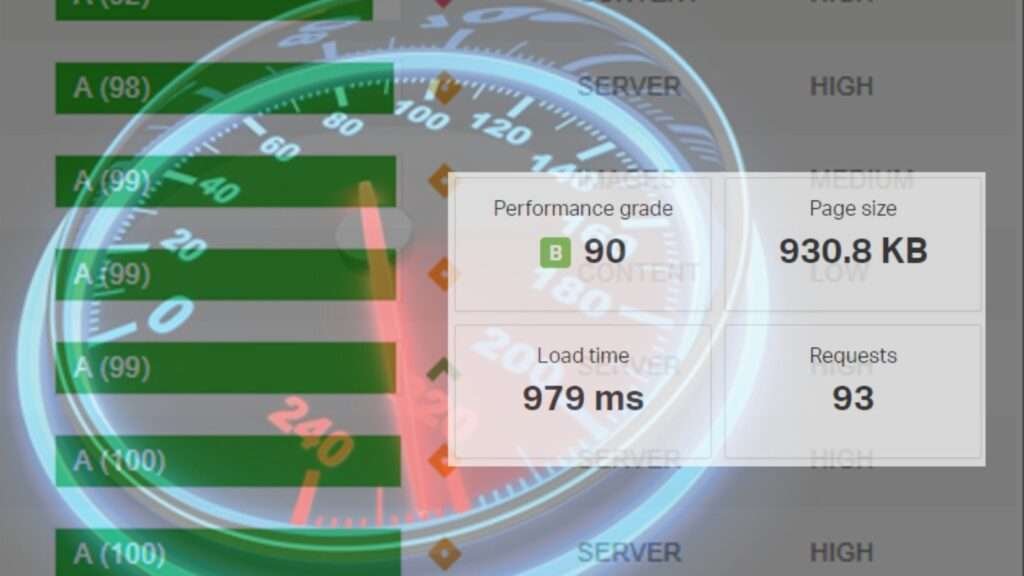
How to increase the speed of your website
Is there anything more important than having a well-designed website? That is having a website that responds very fast.
No matter how excellent your design is or how clever your online material is, if the pages don’t load quickly enough, no one will bother to look at them.
That is why it’s critical to assess your site’s speed frequently. If the performance of your website is below par, you can employ website speed optimization techniques to reduce load times and improve the user experience.
We’ve got advice for you in this post, whether you’re seeking best practices to increase WordPress performance or any other type of site.
In 2021, why is website performance so important?
Wait until you learn about internet users if you thought Google was a harsh critic of your website. A fast WordPress website can help you rank better, but it isn’t the only reason to have one.
The most important reason to take website performance seriously is that it can directly impact your company’s performance. Users today are impatient, especially when it comes to comparison shopping. According to Pingdom, 38% of visitors abandon a website that takes more than five seconds to load.
There’s also the possibility of missing out on sales. Almost 70% of customers claim that a slow website influences their shopping choice. Poor website performance affects your user experience and SEO and can reduce revenue.
Keep in mind that a website might become clogged with time, especially if you continue to add material, including images and videos. Adding many pages and plugins might result in bloated, slow-loading websites. As a result, it’s vital to test your page load speeds regularly to determine whether it’s time to undertake page speed optimization.
Performance of a Classic Website
A web page should be roughly 500 KB in size, according to Google (0.5 MB). Despite this, the typical website today is roughly 2.0 MB for desktop and 1.9 MB for mobile, according to the HTTP Archive’s Page Weight Report. Although a colossal website may result in slower loading times, this is not always the case. The total page size isn’t as crucial if content further down the page loads after stuffing at the top.
Pay attention to the most extended contentful paint (LCP), which should be between 1.5 and 3 seconds. LCP is a metric that evaluates how long it takes for your website’s most significant content element (such as a primary picture or header text) to load within your visitor’s viewport fully.
According to Backlinko, the average Speed Index speed on a desktop is 4.8 seconds and 11.5 seconds on mobile. What do you want to be when you grow up? It’s somewhere between three and three-and-a-half seconds. Unbounce’s Page Speed Report shows that just 15% of websites have acceptable page speeds.
So, how are you going to get there? Let’s look at some ways to make your WordPress website load faster.
WordPress Performance Hacks: 5 Website Speed Optimization Hacks
It’s not difficult to improve the performance of your WordPress website. It’s similar to spring cleaning, but for your website domain. Here are some things you can do right now to improve your website pages load faster.
Test your site speed with a program like Test My Site before knowing where to start.
#1. Activate the WP Caching Plugin.
WordPress generates pages dynamically by default when someone views a post or page on your site. During this process, the server gathers data from a MySQL database and PHP files, which it then generates HTML content for the visitor to consume. There are a lot of stages involved, which might slow down website load times, especially if you have a lot of visitors at once
You may speed up your site by using a caching plugin. When a page is up for the first time, it creates a cache page. Instead of generating a new page for each visitor, it may show this copy to them all.
One disadvantage of caching is that you must delete your cache every time you change a website. The good news is that the top caching plugins include automatic settings. Caching plugins should also be set up to automatically preload the cache so that visitors have a quick experience even the first time they visit.
#2. Get Rid of Unused Plugins and Themes
Keeping themes and plugins that you no longer use around can cause them to become obsolete. When this happens, your WordPress site may become vulnerable to security threats and perform poorly.
So make sure to turn off any plugins you’re not using. Then delete them from the list of deactivated plugins. Go to Appearance > Themes to delete a theme.
Choose a lightweight theme the next time you need a new theme. To put it another way, pick a theme that includes the required features (i.e., sliders, widgets, elements, social icons, plugins, etc.). If you’re concerned that your site will become clogged, hire a web developer. They can ensure that your site only loads the code for the features you’re utilizing, resulting in faster loading times.
#3. Make Your Web Pages’ Images More Optimized
Visuals are a must-have on any website. It adds to the aesthetic of your site and makes it more enjoyable to visit. However, having too many photos on your page will slow down the loading speed. In fact, according to a 2019 analysis by HTTP Archive, graphics account for 34% of the entire weight of a web page. It is up from 21% in 2018, which might be much higher now. Does this imply that you should not use photos on your website? Not in the least.
You can optimize photographs instead of eliminating them from your WordPress website. It involves reducing the image file size, which you can achieve with the help of a script or plugin
Make it the same size as it will show on your website. Reduce the image before you upload it to the page.
You can then use photo editing tools to optimize images before uploading them in the future. You can alter the file format (JPEG, PNG, or WEBP) and significantly compress it using the tool. WEBP is the current standard for online photos. However, older browsers do not support it.
#4. Make sure your WordPress database is clean
Your database is another component of your WordPress website that needs continuous cleaning. It’s best to eliminate unnecessary information from it to keep it as little as possible. To begin, reduce the size of your backups.
Then you may search the data for bloats, such as spam comments, old content drafts, bogus users, and plugins, and delete them.
The practice will lighten your database and web files, allowing your site to run at maximum speed.
#5. Maintain the Speed of Your WordPress Website
You’ll want to maintain your WordPress website’s performance once it’s up and running. Following the recommended practices outlined below, you can keep your WordPress site from becoming clogged and bloated. While this isn’t an exhaustive list of website performance optimization approaches, it’s an excellent place to start and will yield significant results.
Contact our experts if you need help boosting the performance of your WordPress site. We have a team of web designers and developers at Zionike who can help you with your WordPress website. So whether you need a new theme, a feature (to replace a plugin), or general site optimization, we can help




